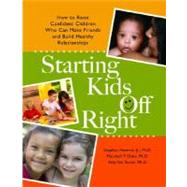
| Introduction | |
| What Are Relationships and How Do They Work? | p. 1 |
| Sullivan's theory of human relationships | p. 4 |
| First Stage: Infancy (birth to two years) | p. 5 |
| Second Stage: Childhood (two to four or five years) | p. 7 |
| Third State: Juvenile Era (about five to ten years) | p. 9 |
| Later Stages of Development (about nine to early adolescence) | p. 11 |
| The four phases of a relationship | p. 12 |
| The Choice Phase | p. 13 |
| The Beginning Phase | p. 14 |
| The Deepening Phase | p. 16 |
| The Ending Phase | p. 18 |
| What's next? | p. 20 |
| The Language of Relationships | p. 21 |
| How language works | p. 23 |
| Nonverbal communication and relationships | p. 25 |
| Major types of nonverbal behavior | p. 29 |
| Facial Expression | p. 29 |
| Paralanguage | p. 33 |
| Personal Space | p. 36 |
| Touch | p. 38 |
| Posture | p. 39 |
| Gesture, Objectics, and Rhythm | p. 41 |
| What's next? | p. 43 |
| Infancy (Birth to Two Years) | p. 45 |
| Order and predictability | p. 46 |
| Locus of Control | p. 48 |
| Locus of Control Scale for Adults | p. 50 |
| A sense of self | p. 56 |
| Using Nonverbal Language To Build a Strong Sense of Self | p. 58 |
| The Adult's Self-Concept | p. 61 |
| A secure attachment relationship | p. 63 |
| How Attachment Relationships Develop | p. 64 |
| Fostering a Secure Attachment Relationship | p. 73 |
| What's next? | p. 79 |
| Childhood (Two to Five Years) | p. 81 |
| Parents, children, and the attachment relationship | p. 82 |
| Setting the Tone for Learning How To Relate | p. 83 |
| Helping Kids Move from Dependence Toward Independence | p. 85 |
| Creating a Holding Environment | p. 86 |
| Fostering a Secure Attachment Relationship in Young Children | p. 88 |
| Repairing the Attachment Relationship | p. 92 |
| Spending Time with Your Children | p. 96 |
| Breaking the Cycle of Unhealthy Parenting | p. 98 |
| Learning to relate through communication | p. 103 |
| Communicating with Words | p. 104 |
| Communicating Without Words: Reading and Sending Nonverbal Cues | p. 106 |
| Understanding Feelings | p. 113 |
| Learning to relate through play | p. 116 |
| Setting the Stage for Play | p. 116 |
| Practicing Social Skills Through Play | p. 117 |
| Learning the Rules of Peer Relationships Through Play | p. 119 |
| Fostering "Good" Play in Children | p. 122 |
| Repairing Problems in Children's Play Skills | p. 128 |
| What's next? | p. 129 |
| The Juvenile Stage (Five to Ten Years) | p. 131 |
| Learning to make friends among peers | p. 134 |
| Establishing a healthy sense of control | p. 177 |
| Conclusion | p. 181 |
| Selected Bibliography | p. 186 |
| Acknowledgments | p. 189 |
| Index | p. 190 |
| About the Authors | p. 195 |
| Table of Contents provided by Ingram. All Rights Reserved. |
The New copy of this book will include any supplemental materials advertised. Please check the title of the book to determine if it should include any access cards, study guides, lab manuals, CDs, etc.
The Used, Rental and eBook copies of this book are not guaranteed to include any supplemental materials. Typically, only the book itself is included. This is true even if the title states it includes any access cards, study guides, lab manuals, CDs, etc.